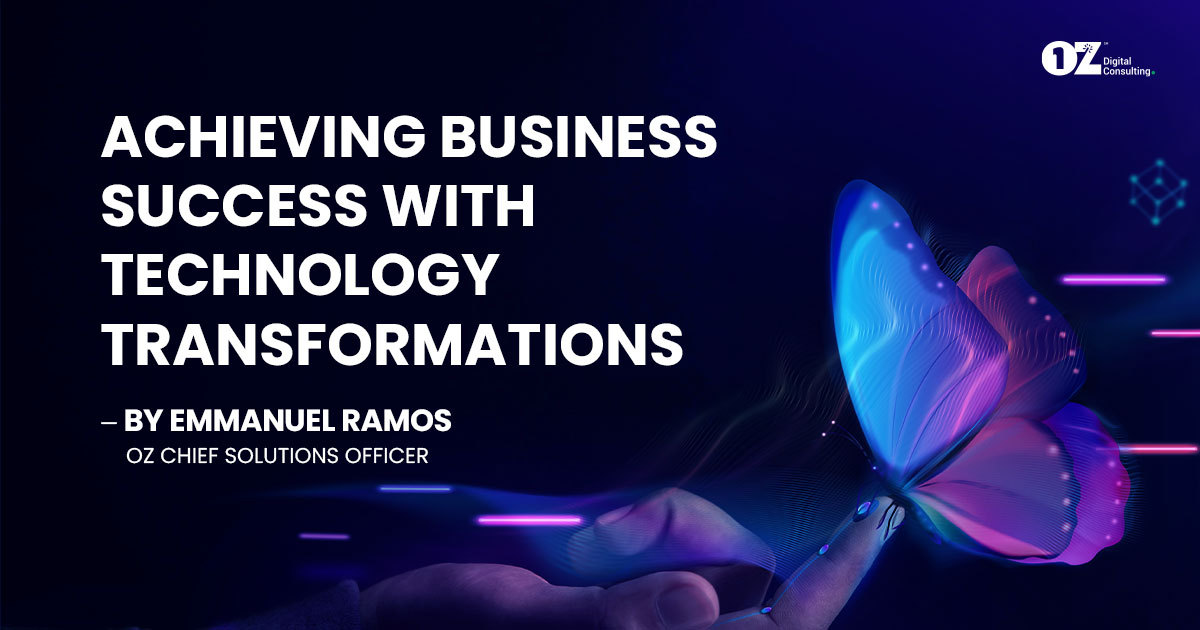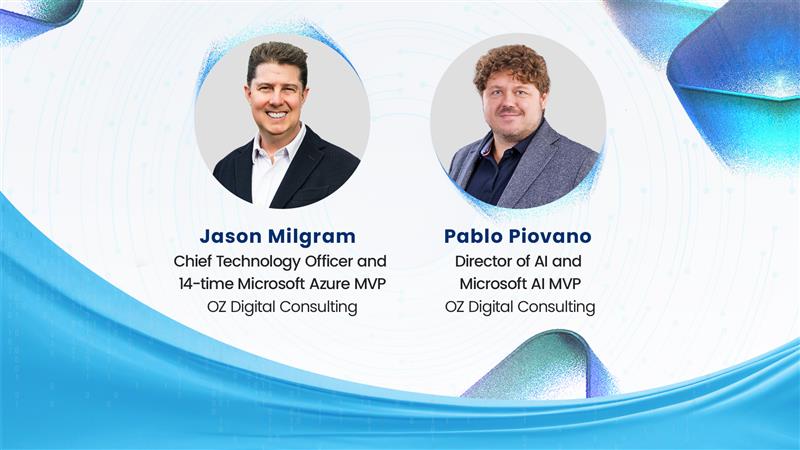As digital technologies continue to disrupt traditional business models, it is crucial for organizations to strategically align IT functions with overall objectives.
But what, precisely, does that entail?
From adopting agile working methods, leveraging analytics applications for data-driven decision-making, and integrating CIOs into leadership teams to investing in training and apprenticeships programs, building proactive CEO influence on technology functions, and attracting and retaining top talent, we’ve put together the following comprehensive guide for tech executives to get themselves and their team from today to the future.
Transforming the IT Function’s Role
To boost a company’s financial performance and maintain competitive advantage, the CEO must transform the role of the IT function.
This involves not only making targeted technology investments and aligning them with both short- and long-term priorities to ensure maximum impact on business growth, but also embracing new technologies such as digital transformation, AI, and ML.
However, it is crucial that these investments are made strategically to maximize returns.
A McKinsey Digital report highlights how top-performing companies make informed decisions about which technologies will deliver the most value based on their specific needs and goals.
Here is a relevant summary:
- Determine which digital channels offer the greatest potential for growth within your industry.
- Examine the potential of developing technologies such as AI and ML to uncover avenues for increased productivity or enhanced customer experiences.
- Prioritize technology investments that support long-term business objectives while delivering short-term wins where possible.
Aligning IT Functions with Company-wide Strategic Priorities
To align IT functions with broader organizational goals, companies must nurture close collaboration between technology leaders and other departments across an organization.
This includes:
- Cross-functional communication: Encourage open dialogues between CIOs, CTOs, senior executives from various departments, and other key stakeholders to identify opportunities for IT initiatives that support overall business objectives.
- Integrated planning: Incorporate technology investments into the company’s overall strategic planning process. Ensure that resources are distributed in a productive way and prioritize IT projects according to their potential influence on the company as a whole.
- Performance measurement: Establish clear metrics for evaluating the success of technology initiatives, including how they contribute to achieving broader organizational goals. Regularly review these measurements to assess progress and make any necessary adjustments to your strategy or resource allocation.
Taking an active role in shaping your company’s IT function can lead to significant improvements in financial performance by ensuring technology investments deliver maximum value across all areas of your business.
Attracting Skilled Engineers and Offering Incentives
Top economic performers understand that recruiting skilled engineers with expertise in cutting-edge solutions such as software development, data science, and machine learning is crucial for driving innovation in a competitive market. By offering appealing incentives, CEOs can attract top talent to help lead their companies toward organizational improvement and financial success.
Hiring skilled engineers not only ensures the successful implementation of new technologies but also creates a culture of continuous improvement within an organization. This, in turn, encourages teams to collaborate, which leads to improved decision-making and financial results.
So, how does a company secure and retain top engineering talent?
First and foremost, it is vital for CEOs to offer attractive incentive packages that go beyond just competitive salaries.
Some examples include:
- Flexible work arrangements: Allowing employees the option to work remotely or choose flexible hours can significantly improve job satisfaction and increase employee retention rates. A recent study by Gallup Research found that remote workers tend to be more engaged and productive.
- Professional development opportunities: Providing access to training programs, workshops, and conferences can help engineers stay up-to-date with the latest industry trends and technologies. This not only enhances their skills but also demonstrates a company’s commitment to employee growth.
- Career advancement prospects: Creating clear career paths for engineers within an organization encourages them to stay long-term by offering opportunities for growth and promotion. This could include mentorship programs or internal job postings that prioritize current employees.
- Performance-based bonuses: Offering financial incentives tied directly to individual performance or team achievements can motivate employees to consistently deliver high-quality work while fostering a sense of ownership over projects.
Adopt Agile Working Methods
Embracing agile working methods can produce quick results by streamlining organizational processes and allowing companies to adapt to changing market conditions and customer needs more efficiently.
To that end, modern IT functions should create software and artificial intelligence tools that automate routine tasks such as development, testing, and deployment.
Agile methodologies, such as Scrum or Kanban, enable teams to work collaboratively while continuously improving their workflows and delivering high-quality products faster than traditional waterfall methods. Adopting agile practices empowers employees with greater autonomy in decision-making while fostering a culture of innovation and continuous improvement.
- Faster time-to-market for new products or features.
- Better collaboration among cross-functional teams.
- Increased flexibility in responding to changes in the business environment.
- Improved overall product quality due to iterative feedback loops.
Automating Routine Tasks Using AI-Driven Tools
The use of artificial intelligence (AI) has revolutionized the way modern IT functions operate. By automating repetitive tasks like code generation, testing, and deployment using AI-driven tools such as IBM Watson AutoAI, businesses can significantly reduce human errors while increasing efficiency throughout the software development lifecycle (SDLC).
Benefits include:
- Code Generation: AI-powered platforms like Google’s TensorFlow allow developers to generate code automatically based on predefined templates or patterns.
- Testing: AI-driven testing tools, such as Testim or Appvance, can analyze software applications to identify potential issues and suggest improvements.
- Deployment: Automated deployment solutions like AWS CodeDeploy enable seamless integration of new code into existing systems with minimal downtime.
Incorporating agile working methods and leveraging AI-driven automation not only streamlines processes but also frees up valuable time for IT professionals to focus on more strategic initiatives.
Leveraging Analytics Applications
Utilizing analytics applications helps users make better decisions based on data-driven insights, enabling businesses to optimize operations while minimizing risks associated with decision-making.
Analytics applications play a crucial role in transforming raw data into actionable information that drives business growth. By utilizing cutting-edge analytics technology, companies can gain valuable insights into customer behavior, market trends, and operational efficiency to make informed decisions based on evidence rather than intuition.
Here are a few examples:
- Predictive analytics: Predictive analytics uses historical data to forecast future events and trends, allowing businesses to proactively address potential challenges before they escalate.
- Prescriptive analytics: Prescriptive analytics goes beyond predicting outcomes by recommending specific actions that should be taken to achieve desired results or mitigate risks.
- Descriptive analytics: Descriptive analytics analyzes past performance to identify patterns and understand what has happened within an organization over time.
Minimizing Risk by Optimizing Operations Using Data Insights
Analytics applications not only aid in making well-informed decisions but also contribute significantly towards reducing risk factors associated with various aspects of business operations.
This is to say, identifying inefficiencies, bottlenecks, and potential threats allows companies to implement data-driven strategies to optimize their processes and improve overall performance.
Some ways in which analytics applications help minimize risk include:
- Risk assessment: Analytics tools enable organizations to identify potential risks by analyzing historical data and uncovering patterns that may indicate vulnerabilities or areas of concern.
- Resource optimization: By using analytics applications, businesses can allocate resources more effectively based on real-time demand, reducing the likelihood of overstaffing or underutilizing assets.
- Fraud detection: Advanced analytics techniques such as machine learning and artificial intelligence can be employed to detect anomalies in transactional data, helping prevent fraudulent activities before they cause significant damage.
In short, incorporating analytics applications into your organization’s decision-making process is essential for driving growth while minimizing risks.
Integrating CIOs into Leadership Teams
Incorporating Chief Information Officers (CIOs) into leadership teams is a crucial step toward ensuring that technology initiatives are aligned with overall business strategies.
This strategic move not only fosters better collaboration between IT and other departments but also helps to maximize the returns on technology investments. By involving CIOs in high-level decision-making processes, companies can ensure that their tech initiatives are focused on achieving specific goals and generating tangible results. For instance, Gartner suggests that organizations should create joint ownership of digital transformation projects by collaborating closely with both IT leaders and other functional heads.
In one notable case, a healthcare CEO achieved a twenty-eight percent increase in sales within less than a year after integrating his CIO into his leadership team.
To drive maximum impact from technology investments, it’s essential for CEOs to establish clear links between these investments and their potential contribution to business value.
To strengthen collaboration between C-suite executives and IT leaders, there should be…
- Better communication: Including the CIO as part of the executive team facilitates open lines of communication across all levels within an organization. This ensures a seamless flow of information between different departments, enabling faster decision-making based on accurate data insights.
- Cross-functional understanding: When CIOs are part of the leadership team, they gain a deeper understanding of other business functions and their unique challenges. This helps them to develop technology solutions that cater specifically to these needs, thereby driving better results.
- Shared accountability: As C-suite executives work closely with IT leaders, they can jointly take responsibility for the success or failure of tech initiatives. By establishing shared accountability between C-suite execs and IT heads, an atmosphere of joint ownership is created that incentivizes everyone involved to strive for the same objectives.
Integrating CIOs into leadership teams is an effective way for CEOs to ensure that through collaboration between IT leaders and other functional heads, organizations can maximize returns on their investments while driving innovation and growth.
Investing in Training & Apprenticeships
To drive successful technology transformations, CEOs must invest in training and on-the-job apprenticeships, upskilling employees while fostering a culture of continuous learning within the organization to keep up with swiftly changing tech by providing tailored training.
CEOs should prioritize employee development by allocating resources toward relevant courses, workshops, certifications, or online platforms such as Coursera, Udemy, or Pluralsight.
In addition to formal training programs, however, offering on-the-job apprenticeships can nurture talent within an organization.
Apprenticeships provide employees with a chance to acquire hands-on experience while engaged in genuine projects, supervised by experienced personnel. AWS has implemented a model apprenticeship program to bridge the educational-employment gap in tech, helping companies stay competitive while ensuring employee satisfaction and business success.
Investing in education and apprenticeships is key for developing a robust tech workforce, as it provides opportunities to upgrade employees’ skill sets while creating an atmosphere of ongoing growth.
Active CEO Influence on Technology Functions
CEOs must take a proactive role in the formation of tech strategies, collaborating with CIOs, CTOs, and other senior executives to ensure that everyone is on board with their vision for leveraging technology.
A McKinsey report highlights that top-performing CEOs take a hands-on approach when it comes to driving technological innovation within their organizations. CEOs collaborate with CIOs, CTOs, and other executives to ensure a unified comprehension of the business’s ambition for utilizing tech as an edge.
This active involvement allows CEOs to make informed decisions about resource allocation and investment priorities while also fostering a culture of innovation throughout the organization. By being directly engaged with key decision-makers at every level, CEOs can better anticipate potential challenges or opportunities arising from new technologies and adjust strategies accordingly.
To maximize ROI through strategic alignment between IT and business objectives it is essential to…
- Create clear communication channels: Establishing open lines of communication between IT leaders and other departments is essential for aligning projects with broader organizational goals. Regular meetings or workshops involving cross-functional teams help foster collaboration across different areas of expertise.
- Prioritize high-impact projects: To maximize ROI, CEOs should focus on technology initiatives that directly contribute to the company’s strategic objectives. This may involve investing in digital transformation projects or implementing advanced analytics tools to drive data-driven decision-making.
- Monitor progress and adjust as needed: Regularly reviewing project milestones and KPIs enables CEOs to identify potential roadblocks early on and make adjustments accordingly. This proactive approach ensures that IT investments continue to deliver value even when faced with unforeseen challenges.
In conclusion, active CEO influence on technology functions is crucial for driving innovation and maximizing returns from tech investments. By taking a hands-on approach in shaping their organization’s tech strategy, CEOs can ensure alignment between IT initiatives and overall business goals while fostering a culture of continuous improvement.
Are you a CIO, CTO, or senior technology executive looking for solutions to help drive digital transformation within your organization? The OZ team of experienced professionals is here to provide the best solutions and advice for your business needs. From data analytics, enterprise integration and intelligent automation, web/mobile applications, and Cloud and IT services, we have the expertise to make sure that your transition is seamless. Let us be your guide in this digital journey–contact us today for a consultation!



